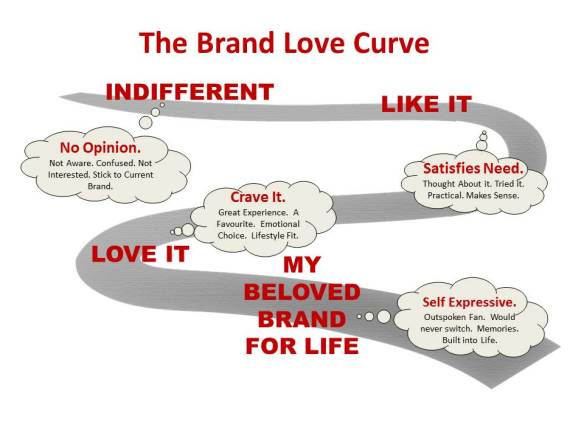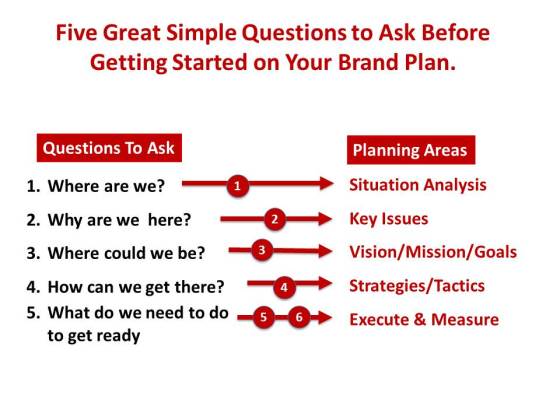June2012
A well-written Brand Plan helps to align an organizationaround the direction, the choices and the tactics that need implementing for a brand to achieve their goals. The Brand Plan unites functions such as marketing, sales, product development outlining what each group needs to do for the brand to be successful, while setting goals that operations and finance need to support. The Brand Plan gains approval from senior management around spending options, strategic choices and sets forth the tactics that will be implemented. It holds senior management accountable to the plan. The Brand Plan helps frame the execution for internal stakeholders and for the various agencies who will implement programs within the plan. Execution is an expression of the strategy, and the plan must hold agencies accountable to delivering work that is on strategy. And lastly, the Brand Plan helps the Brand Manager who wrote it, stay focused to deliver what they said they would. It helps them to refer back to the strategy and the intention to ensure the Brand Manager“stays on strategy” the entire year.
Where are you on the The Brand Love Curve
In the consumer’s mind, brands sit on a Brand Love Curve, with brands going from Indifferent to Like It to Love It and finally becoming a Beloved Brand for Life. At the Beloved stage, demand becomes desire, needs become cravings, thinking is replaced with feelings. Consumers become outspoken fans. It’s this connection that helps drive power for your brand: power versus competitors, versus customers, versus suppliers and even versus the same consumers you’re connected with. The farther along the curve, the more power for the brand. It’s important that you understand where your brand sits on the Love Curve and begin figuring out how to move it along towards becoming a Beloved Brand.
 With each stage of the Brand Love Curve, the consumer will see your brand differently. The worst case is when consumers have “no opinion” of your brand. They just don’t care. It’s like those restaurants you stop at in the middle of no-where that are called “restaurant”. In those cases, there is no other choice so you may as well just name it restaurant. But in highly competitive markets, you survive by being liked, but you thrive by being loved. Be honest with yourself as to what stage you are at, and try to figure out how to be more loved, with a vision of getting to the Beloved Brand stage.
With each stage of the Brand Love Curve, the consumer will see your brand differently. The worst case is when consumers have “no opinion” of your brand. They just don’t care. It’s like those restaurants you stop at in the middle of no-where that are called “restaurant”. In those cases, there is no other choice so you may as well just name it restaurant. But in highly competitive markets, you survive by being liked, but you thrive by being loved. Be honest with yourself as to what stage you are at, and try to figure out how to be more loved, with a vision of getting to the Beloved Brand stage.
Writing the Plan
Most people get stuck in writing a Brand Plan, because they sit at the computer frozen with writers cramp, over-thinking what to put down, uncertain how to frame it all and unsure how to even write. In the most simplistic of terms, here are the main elements of a Brand Plan and how simple you should keep it:
- We have some long-term thoughts on where the brand can go (vision) and the special assignment to get us on our way. (mission) And that help shape the things we want to achieve with our brand. (goals) To get started, the brand has different options (strategies) for how to get there and programs that most effectively deliver the choice you make (tactics)
- We try to find a slice of the population (target) to get them to take an action (expected result) that makes our brand bigger. We then find out what to say and how to talk to them to trigger that action (main message) We need to re-enforce why we can do it and others can’t (support)
- We then create the most motivating stimulus (product, advertising, sales promotion etc.) to get them to take action and put it in part of their life where they are most likely to hear it and act on it (the medium, launch or channel etc.)
If it is that easy, why do we struggle and how do we screw it up. Maybe it is the fancy buzz words that get in our way of our intention. Instead, start with what you want to do in the plan, not the buzz words of vision, mission or strategy, because those words can get in your way.
One thing I like to do is use 5 key questions to help frame the Brand Plan, the answers help frame everything you need in a brand plan. The five questions to ask yourself are: 1) Where are we? 2) Why are we here? 3) Where could we be? 4) How can we get there? and 5) What do we need to do to get ready? With these 5 questions answered, it can get you on your way towards a situation analysis, mapping of the key issues, statements of vision, mission and goals, choices around strategies and tactics as well as the execution and measurements:
From there, you could easily write a Brand Plan as matched up and outlined below:
In terms of analysis, there are so many ways to do it but my preference is to use a force-field analysis of Drivers and Inhibitors. Basically, drivers are what is pushing the brand and inhibitors is what’s holding it back. These are happening NOW. Then add in the a future looking analysis of Risks and Opportunities. These could happen in the future. The simplicity of this analysis helps the next stage of your brand plan, and set up the Key Issues which are focused on finding ways to continue/enhance the growth drivers, minimize or reverse the inhibitors, avoid the risks and take advantage of the opportunities.
I like to put the Key Issues into question format, as a rhetorical question (eg. Key Issue: How do I drive more distribution for Listerine?), because the answer to these questions becomes my strategies (Leverage New products to gain added Distribution in the Food channel). The better the questions, the better the strategies.
Not enough plans use a vision and mission statement. They are essential in helping to frame the direction of the brand. Think of the Vision Statement as the end in Mind Achievement, thinking 5-10 years out of what do you want your brand to become. It can be a balance of qualitative and quantitative. And it should be motivating and enticing enough to motivate people to get behind it. The Mission Statement becomes the “special assignment” and is tightly connected to the vision, but is more likely a 1-3 year direction—if a vision is a destination, then a mission is a major milestone on the path towards that vision. While a vision focuses on the future state, the mission focuses on the movement the brand must undertake to go from present day to future state.
Strategic Thinking
Strategies are choices you make. If you pick everything then you aren’t really making a choice are you? There are 4 elements of a good strategy: Focus, Early Win, Leverage and a Gateway to something bigger.
- FOCUS all your energy to a particular strategic point or purpose. Match up your brand assets to pressure points you can break through, maximizing your limited resources—either financial resources or effort.
- You want that EARLY WIN, to kick-start of some momentum. Early Wins are about slicing off parts of the business or population where you can build further.
- LEVERAGE everything to gain positional advantage or power that helps exert even greater pressure and gains the tipping point of the business that helps lead to something bigger.
- Seeing beyond the early win, there has to be a GATEWAY point, which is the entrance or a means of access to something even bigger. It could be getting to the masses, changing opinions or behaviours. Return on Investment or Effort.
In terms of writing of the Brand Plan, my recommendation is focus on the top 3 strategies and then map out 3 tactics per strategy. That’s a total of 9 tactics per year, which is plenty to put all your money behind. Having only 9, allows you to do a great job at each of the tactics, focuses your money on the top tactics that will drive the highest return on investment and effort. Just imagine if you had 5 strategies and 5 tactics per–you’ve just gone from the top 9 tactics up to the top 25 tactics. It might feel like you are covering more, but really you’re just spreading your money too thin and not really doing a great job at any of them. Too many brands end up with a “To Do” list that’s long at the start of the year and mysteriously unfinished at the end of the year.
A good brand plan should have a consistency from the vision all the way down to the execution. It should flow. Think of a band playing in perfect harmony. When you write something that does not fit, it should stand out like a “Tuba” player, trying to play his own song. It’s misfit to the plan. As you near completion of your plan, go through your document and see if you can spot misfits. Find the Tubas!
Lastly, I recommend organizations come up with a common format for plans across all plans. Freedom in formats just forces Brand Managers to try to come up with the coolest of power point slides. I’d rather have my Brand Managers putting their creative juices into tactics that get into the marketplace rather than doing cool slides. And while Brand Plans might use 10 or 20 slides (no more than that) ideally you can find a way to get your entire “Plan on one page” making it easier for everyone to follow along.



Great site! I am loving it!! Will be back later to read some more. I am taking your feeds also.
I like the valuable information you provide in your articles. I’ll bookmark your blog and check again here regularly. I’m quite sure I’ll learn plenty of new stuff right here! Good luck for the next!